Many craftworkers use plywood in construction work. Plywood is several layers of veneer that are laid perpendicular to the previous layer, pass through a press, and are then ready for use. The veneer production technology is very simple, so we use this material in many areas.
The cost of plywood is low, so it is also often used in repair work. This shows that the range of applications for this material is really wide and varied. We can use it in finishing works. Plywood can level the ceiling, use it as a backing for flooring. We often make lightweight building structures of plywood, we make partitions in buildings.
With so many advantages, plywood has one big and significant drawback. Under the influence of water and moisture, plywood quickly loses its original appearance, becomes brittle, deformed, and exfoliates. And then the question arises. How can you make the plywood last much longer even when exposed to moisture? This is the question we tried to answer in our article.
Protection methods
How to treat plywood from water? There are many ways to carry out protection:
Epoxy compound layer
One method to improve the strength and moisture resistance of plywood is to use epoxy. This method is widespread in production, and many workers know about it. After treatment with epoxy resin, plywood becomes hard, durable. When moisture gets in, plywood does not absorb water and therefore remains strong and unharmed.
This method has a small drawback. Epoxy resin is the strongest allergen. We recommend using plywood with such a coating only in utility or technical areas. There are special solutions that reduce the concentration of epoxy resin. It reduces both the exposure to allergens and the strength of the material. Dilution of epoxy with such solutions is also a very complex and time-consuming process. Professionals should only do this. Also, to dry plywood, you will need a construction hair dryer, which is expensive. Therefore, this method is not suitable for every owner.
Using acrylic varnish
Such a product does not have a pungent, poisonous odor; moreover, unlike oil varnishes (plywood oil), it perfectly impregnates surfaces.
Parquet varnish covering
The next method that we will talk about is available to everyone. Using parquet varnish, you can significantly strengthen the plywood and make it moisture resistant.
There is a wide selection of paints and varnishes in stores, so when choosing a varnish for covering a plywood sheet, pay attention to the following:
- Polyurethane varnishes will make the plywood durable;
- Nitro lacquers are quick-drying, moisture-resistant and hard enough.
Before opening the plywood with varnish, it must be sanded with sandpaper. After that, the plywood needs to be wiped, primed, and degreased. After the primer has dried, apply the varnish of your choice to the surface and leave it to dry. It is better to apply varnish in several layers, so the plywood will be even stronger.
The use of fiberglass
This method is costly and laborious, but it can get a good moisture resistance effect and strengthen the material. For you to succeed, you need to perform the following manipulations. Prepare a sheet of plywood. To do this, duplicate everything that we told in the previous paragraph. After the varnish dries, glue gauze or a sheet of fiberglass to the plywood and open the plywood with another coat of varnish. Leave the plywood for 3-5 days until it is completely dry. After that, apply the last coat of varnish, let it dry and you can use the plywood for construction work.
Lamination
Using this method, you must glue the plywood with plastic, metal, or special film sheets. To make the plywood strong using this method, you will need to apply the resin to the plywood sheet. After that, put a sheet of plywood on it with a sheet of metal or plastic and press two materials. After that, the ends of the plywood sheet are treated with protective compounds and we can use it in work. This method is not suitable for home use.
Use of paints
The last method we will tell you about is the use of paint coating. When choosing paint, take one that has water-repellent properties. The paint should not allow moisture to pass through. This method is not expensive and can be easily done at home. When using plywood in residential areas, it is best to use water-based paint. Such paint dries quickly, does not have allergic components, and plywood painted with such paint can be further used in the house.
How to paint? When painting outdoors, ready-made diluted enamels can be used. This will save you time. You will not need to prepare the paint, come up with the proportions to dilute the enamel, and so on. You just take a paintbrush and paint and start painting the plywood sheet.
First, the material should be carefully sanded with sandpaper. Then use a brush or roller to coat the surface with a primer. Let the primer dry. After 3-4 hours, be able to apply the first coat of paint. Leave the paint to dry, and after completely dry, apply another coat of paint.
Post-treatment of plywood to maintain moisture protection
Sometimes plywood can become a cheap material during the renovation. Plywood can partition for walls and even be used for flooring. If, during operation, the plywood sheet cracked or cracked on it, then after while moisture will get there and the sheet will completely exfoliate. At such moments, one cannot hesitate. You need to reinforce the chips and cracks. To do this, use putty. Take sandpaper, clean the cracks well. Treat with a primer and putty. You can still open such places with lag, paint, or epoxy.
Using plywood as flooring
We can use plywood sheets as a backing for expensive flooring materials. Sometimes plywood is used to make rough, test floors, and sometimes as the primary material for flooring.
If you have chosen plywood as a floor covering, then you should think about how to make it durable, protect it from the sun and moisture. First, you need to sand the surface, then coat with acrylic primer and dry the plywood sheets for about three days. This coating will protect the plywood from the effects of mold and mildew. If, after several years of operation, you notice cracks appearing on the plywood, then it’s time to update the protective coating.
Application of additional materials
What other materials can strengthen the plywood sheet:
- Polymer primers. Penetrates deep into the plywood layer and strengthens it from the inside;
- Putty for woodworking. Used for leveling the surface, removes chips, cracks, and deformation of the plywood sheet;
- Varnish. We recommend using it after applying a coat of paint. Used to cover plywood on walls and floors;
- It treats the surface with sticky sandpaper;
These were additional tips when working with plywood to help you protect it from moisture and sun exposure.
Comparison of Waterproofing Methods for Plywood
The table below provides a comparison of various waterproofing methods for plywood. These methods are commonly used to protect plywood from water damage and extend its lifespan. The indicators compared include effectiveness, cost, application difficulty, and durability.
| Waterproofing Method | Effectiveness | Cost | Application Difficulty | Durability |
|---|---|---|---|---|
| Paint or Varnish | Medium | Low | Easy | Low |
| Epoxy Sealer | High | Medium | Moderate | High |
| Marine Grade Plywood | High | High | Moderate | High |
| Waterproofing Membrane | High | Medium | Moderate | High |
Explanation of the table:
- The table compares four common waterproofing methods for plywood: Paint or Varnish, Epoxy Sealer, Marine Grade Plywood, and Waterproofing Membrane.
- The “Effectiveness” indicator assesses how well each method protects plywood from water damage. It is categorized as Medium or High.
- The “Cost” indicator compares the relative expenses of each method, classified as Low, Medium, or High.
- The “Application Difficulty” indicator describes the level of complexity involved in applying each method, ranging from Easy to Moderate.
- The “Durability” indicator evaluates the long-term resilience of the waterproofing method, categorized as Low or High.
Based on the table, the following observations can be made:
- Paint or Varnish is a relatively inexpensive and easy-to-apply method, but it offers only moderate effectiveness and durability.
- Epoxy Sealer provides high effectiveness and durability, but it comes at a moderate cost and requires moderate application difficulty.
- Marine Grade Plywood and Waterproofing Membrane both offer high effectiveness and durability, but they are more expensive compared to the other methods.
It’s important to note that the effectiveness, cost, application difficulty, and durability may vary based on the specific products used and the application technique employed. It’s recommended to carefully consider these factors and choose the appropriate waterproofing method based on your specific requirements and budget.
FAQ
What are the different methods to waterproof plywood?
There are several effective methods to waterproof plywood, including using waterproof sealants, applying epoxy coatings, using marine-grade plywood, and using waterproofing membranes.
Can I use paint to waterproof plywood?
Yes, you can use paint to waterproof plywood. However, it is important to choose a paint that is specifically designed for exterior use and provides a waterproof barrier. Applying multiple coats and ensuring proper coverage can help enhance the waterproofing effectiveness.
What is the best waterproof sealant for plywood?
There are various waterproof sealants available in the market, such as polyurethane sealants, silicone sealants, and epoxy sealants. The best sealant for plywood depends on the specific application and desired level of waterproofing. It is recommended to choose a high-quality sealant that is suitable for outdoor or marine environments.
How do I prepare plywood before waterproofing it?
Before waterproofing plywood, it is essential to properly prepare the surface. Start by cleaning the plywood thoroughly to remove any dirt, dust, or debris. If necessary, sand the surface to create a smooth and even texture. Ensure that the plywood is dry before applying any waterproofing products.
Can I use a waterproofing membrane to protect plywood?
Yes, using a waterproofing membrane is an effective way to protect plywood from moisture. Waterproofing membranes are usually made of rubber or elastomeric materials and can be applied directly onto the plywood surface. They provide a durable and flexible barrier against water intrusion.
Is marine-grade plywood waterproof?
Marine-grade plywood is highly resistant to moisture and water damage, but it is not entirely waterproof. It is specifically designed to withstand humid and wet environments, making it a suitable choice for applications such as boat construction and outdoor structures. However, even marine-grade plywood requires additional waterproofing measures for long-term protection.
Can I use epoxy coating to waterproof plywood?
Yes, applying an epoxy coating is an effective method to waterproof plywood. Epoxy creates a strong and durable protective layer that seals the plywood and prevents water penetration. It is important to apply multiple coats of epoxy and follow the manufacturer’s instructions for proper application and curing.
How long does waterproofing plywood last?
The longevity of waterproofing plywood depends on various factors, such as the quality of the waterproofing method used, the exposure to moisture and weather conditions, and the maintenance of the plywood. With proper installation and maintenance, waterproofing treatments can provide protection for several years, but periodic inspections and reapplication may be necessary over time.
Can I waterproof plywood for outdoor use?
Yes, plywood can be waterproofed for outdoor use. By applying appropriate waterproofing methods, such as sealants, coatings, or membranes, plywood can be protected from moisture, rain, and other environmental factors. Ensure that the waterproofing products used are specifically designed for outdoor applications and offer adequate protection against weathering.
Useful Video: Polyurethane Plywood Deck Coating
Final Words
Lightweight and cheap to use, the material can deteriorate from high temperatures and high humidity. Carefully selected means of strengthening the top layer of plywood will contribute to its durability and increase its wear resistance.
Plywood is a wood material that can delight you with its aesthetics and attractive price. If you find chips, crayons, or large cracks on the plywood, do not get upset and run to the building materials store for new sheets. Ahead of you is a minor repair using one of the suggested methods above. If you follow these manipulations, then the plywood will serve you for over one year.

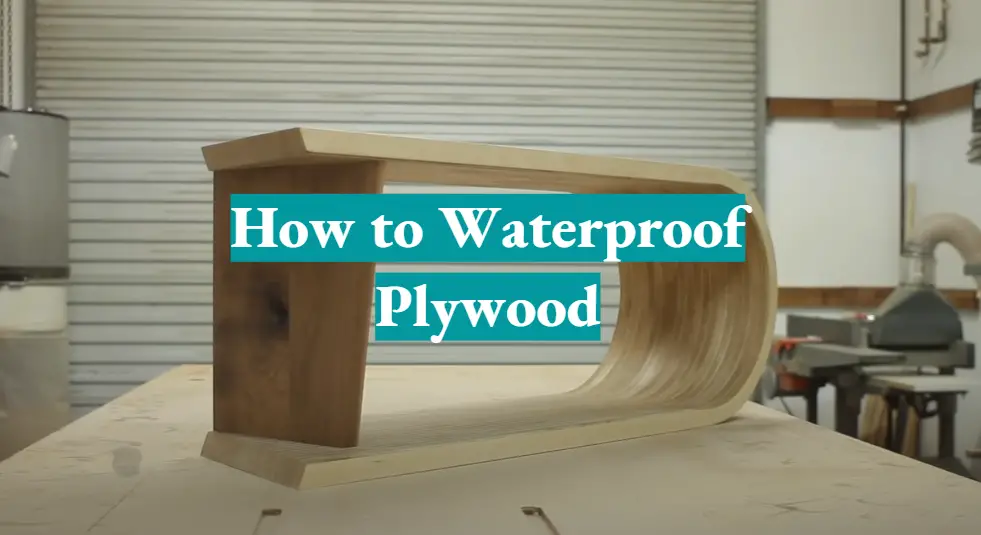
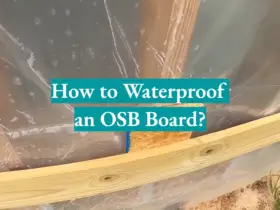
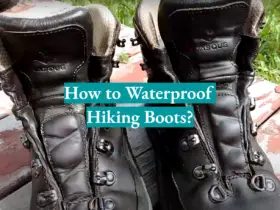
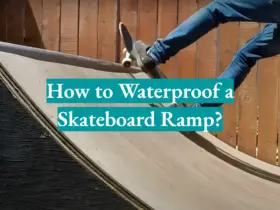
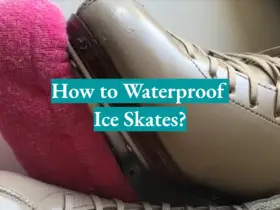
Leave a Reply